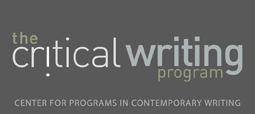Bioengineering
An Overview of the Discipline
Bioengineering encompasses any sub-discipline that applies engineering and scientific principles to not only the human body, but also other organisms and the environment. These sub-disciplines include but are not limited to:
Writing in the Discipline
Goals
Bioengineers are concerned with identifying a societal need relating to any living system and addressing it through science and invention. Therefore, writing in this discipline primarily aims to define a problem and propose a solution.
Reasoning
Writing in Bioengineering is largely explanatory. Bioengineers propose new solutions synthesized from previous publications and current research and must explain the technical details of their experiments and how the data collected from those experiments supports their findings.
Evidence
Writing in this discipline is based on quantitative data and statistical analysis. Some qualitative information may be included but never used as evidence. For example, the claim "the polymer was flexible" needs to be substantiated by a quantitative measurement testing the parameter of the polymer's flexibility. Each piece of evidence is usually justified with a control; an exception is in the case of publications on design, in which there may not be an existing, suitable control.
Authorship
While many experiments are conducted individually, writing is a collaborative process. Writing a piece brings together the author, clinicians, and other engineers. A paper is never published without several co-authors, and some include as many as twenty. However, review articles that synthesize previous publications are single-authored at times.
Writing Tips For Students
Important Criteria for Student Writing
Each bioengineering publication requires thorough reasoning, evidence, and original ideas. Grammar, mechanics, and style are important as well, but not to the same extent.
Style Preferences
Most bioengineering research is published in academic journals. Academic journals impose strict word limits and formatting on submitted articles, so writers must write clearly in as few words as possible. Clear and concise language is preferred to metaphors and figurative language.
Common Errors
Student writing frequently lacks the concision and clarity characteristic of scientific writing. They may also lack proper citations when required to justify their claims.
Genre
Student Assignments
Writing assignments in bioengineering for undergraduates are typically small lab reports based on a lab experiment conducted earlier that week in class. Lab reports require background research and thorough analysis of the data. Students may also be required to write a technical report on a design as part of their senior design projects.
Professional Writing
Professional writing is more diverse and includes research grants, journal articles, and other kinds of publications.
The following link has a list of Penn professors, sorted by subdiscipline, with links to examples of their writing. The students are encouraged to meet with their instructors to clarify any confusion regarding the formatting of lab reports for each course.
Bioengineering Research Areas
© 2013-2014 The University of Pennsylvania
Meet the Professors
 Dr. Arjun Raj
Dr. Arjun Raj
"Reasoning and evidence and original ideas are more important..." More...
 Dr. Jason Burdick
Dr. Jason Burdick
"My writing involves an iterative process between myself and my graduate students." More...
 Dr. Susan Margulies
Dr. Susan Margulies
"I actually do all my refining and rearranging before I even start writing paragraphs..." More...
 Dr. David Meaney
Dr. David Meaney
"I am a slave to outlining. What I often do is..." More...
